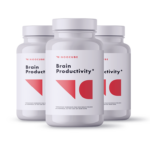Piracetam is a nootropic supplement from the racetam family, known for its role in enhancing cognitive function, memory, and learning ability. It is one of the earliest nootropics developed, discovered by Dr. Corneliu Giurgea in 1964, and is still widely used today. Piracetam works by modulating the neurotransmitter systems in the brain, particularly those involving acetylcholine and glutamate, which are critical for memory formation and neuroprotection. It is often used by students, professionals, and individuals experiencing age-related cognitive decline to boost mental clarity and focus.
In this review, we’ll discuss how Piracetam works, its key benefits, potential side effects, and whether it’s an effective option for cognitive enhancement.
What is Piracetam?
Piracetam is the first of the racetam family of nootropics, designed to enhance brain function by increasing cell membrane fluidity and neurotransmitter activity. Unlike stimulants or sedatives, Piracetam works without causing significant sedation or hyperstimulation, making it a relatively mild yet effective cognitive enhancer. Piracetam is widely regarded as a safe and non-toxic compound, and it is commonly used for memory improvement, mental clarity, and neuroprotection.
Although Piracetam is not FDA-approved for any medical conditions in the United States, it is prescribed in various countries to treat conditions like dementia, Alzheimer’s disease, and cognitive disorders caused by stroke or trauma.
How Does Piracetam Work?
Piracetam’s mechanisms of action are primarily related to its effects on neurotransmitter systems and neuronal membranes:
- Acetylcholine Enhancement: Piracetam influences the cholinergic system, which is involved in memory formation and learning. It increases the utilization of acetylcholine, a neurotransmitter that plays a key role in cognitive processes, helping to enhance memory retention and recall.
- Neuroprotective Effects: Piracetam enhances cell membrane fluidity, improving the function of receptors involved in synaptic transmission. This is thought to help protect neurons from oxidative damage, inflammation, and age-related cognitive decline.
- Improves Cerebral Blood Flow: Piracetam is believed to enhance blood flow to the brain, increasing oxygen and nutrient delivery to brain cells. This can support mental energy, clarity, and improved cognitive performance, particularly in individuals with compromised brain function.
- Glutamate Modulation: Piracetam also interacts with the glutamatergic system, which is critical for learning and memory consolidation. By modulating AMPA receptors (which are glutamate receptors), Piracetam enhances synaptic plasticity, making it easier for neurons to communicate.
Key Benefits of Piracetam
- Improves Memory and Learning: One of the primary benefits of Piracetam is its ability to enhance memory formation and recall, particularly in individuals experiencing age-related cognitive decline or dementia.
- Enhances Focus and Mental Clarity: Piracetam helps increase mental energy and focus, making it easier to concentrate on tasks for longer periods. This makes it popular among students and professionals looking to enhance productivity.
- Supports Cognitive Health in Aging: Piracetam is frequently used to support brain function in older adults, particularly those experiencing cognitive issues related to Alzheimer’s disease or dementia. Its neuroprotective effects may help slow the progression of cognitive decline.
- Neuroprotective Effects: Piracetam has been shown to protect neurons from damage caused by oxidative stress, ischemia, and trauma. This makes it a potential therapeutic option for individuals recovering from stroke, traumatic brain injury, or other neurodegenerative conditions.
- Enhances Learning Capacity: By improving synaptic plasticity and acetylcholine utilization, Piracetam may improve the brain’s ability to learn and retain information.
Potential Side Effects
While Piracetam is generally considered safe, some individuals may experience mild side effects, especially when taking higher doses. Common side effects include:
- Headaches: One of the most commonly reported side effects of Piracetam is headaches, which are often linked to acetylcholine depletion. This can typically be alleviated by supplementing with a choline source, such as Alpha-GPC or Citicoline.
- Insomnia: Piracetam’s stimulating effects may cause difficulty falling asleep if taken too late in the day.
- Gastrointestinal Issues: Some individuals report nausea, diarrhea, or stomach discomfort, especially if taking large doses of Piracetam.
- Nervousness or Agitation: In rare cases, Piracetam may cause feelings of restlessness or irritability, particularly in individuals who are sensitive to nootropic stimulants.
As always, it is important to start with a lower dose to assess tolerance and consult with a healthcare provider before use, especially if you are taking other medications or have underlying health conditions.
Who Should Consider Using Piracetam?
Piracetam may be suitable for individuals who:
- Want to improve memory and learning capacity for work, study, or personal growth.
- Are experiencing age-related cognitive decline and want a supplement that supports long-term brain health.
- Need a cognitive enhancer that does not cause overstimulation or sedation, making it appropriate for daily use.
- Are recovering from a stroke or traumatic brain injury and want a supplement that supports neuronal repair and neuroprotection.
- Are interested in nootropics and want to try one of the safest and most well-researched cognitive enhancers available.
The Company Behind Piracetam
Piracetam is not patented and is produced by various manufacturers around the world. Since it is not approved by the FDA for medical use in the United States, Piracetam is typically available through nootropic vendors and supplement retailers. It is widely used in Europe and other parts of the world as a treatment for cognitive disorders, particularly in older adults.
Customer Testimonials
Here’s what some users have experienced with Piracetam:
- “Great for memory and focus”
“I started using Piracetam during my exam prep, and it made a noticeable difference in my ability to concentrate and recall information. It’s subtle but effective.” – Student Review - “Helps with mental clarity”
“Piracetam has helped me stay mentally sharp at work. I feel more focused, and my memory has improved. It works best when I stack it with a choline supplement.” – Professional Testimonial - “Good for age-related cognitive support”
“As someone in their late 60s, I’ve been using Piracetam to maintain my cognitive function. I’ve seen improvements in my memory and mental alertness, especially when combined with other nootropics.” – User Review
Where to Buy and Pricing
Piracetam can be purchased through various nootropic websites and international vendors, though availability may vary depending on local regulations. Prices typically range from $20 to $50 for a 30 to 60-day supply, depending on the brand and dosage.
Final Thoughts: Is Piracetam Worth It?
From a medical perspective, Piracetam remains one of the most well-researched nootropics for cognitive enhancement. Its ability to boost memory, focus, and mental clarity, combined with its neuroprotective effects, makes it a valuable tool for individuals looking to maintain or improve brain function. While its effects may be subtle, it is generally regarded as safe for long-term use, making it a solid choice for those seeking mild cognitive benefits without the risks associated with stronger nootropics or stimulants.
If you’re looking for a well-established nootropic that has stood the test of time, Piracetam is definitely worth considering, particularly when combined with a choline source to maximize its effectiveness.
Frequently Asked Questions (FAQs)
- How long does it take to feel the effects of Piracetam?
Most users report feeling the effects of Piracetam within 1-2 weeks of consistent use, with improvements in memory and focus becoming more noticeable over time. - Can Piracetam be stacked with other nootropics?
Yes, Piracetam is commonly stacked with other nootropics, particularly choline sources like Alpha-GPC or Citicoline, to enhance its effects and reduce the risk of headaches. - Is Piracetam safe for long-term use?
Piracetam is considered safe for long-term use when taken at recommended doses, but it’s always best to consult with a healthcare provider before starting any new supplement.
Recommended Health Supplements 2025
| Product | Price/bottle | Review | Visit |
|---|---|---|---|
 Weight Loss |
$69.99 | Review | PhenQ » |
 Gut Support |
$64.99 | Review | Your Biology Gut+ » |
 Weight Loss |
$64.99 | Review | Capsiplex Trim » |
 Cognitive Support |
$64.99 | Review | Brain Productivity » |
 Sleep Aid |
$64.99 | Review | Sleep Upgrade » |
- Beneflex Review: Side Effects & Benefits Breakdown 2025
- Slendesta Review: Ingredients & Benefits Breakdown 2025
- Donormyl Review: Side Effects & Benefits Breakdown 2025
- Mellodyn Review: Side Effects & Benefits Breakdown 2025
- Oneiromancer Review: Side Effects & Benefits…
- Estroven Review: Ingredients & Side Effects Breakdown 2025
- Zygasm Review: Ingredients & Benefits Breakdown 2025
- BurnerTek Review: Side Effects & Benefits Breakdown 2025
- Vigorelle Review: Benefits & Side Effects Breakdown 2025
- Progest-E Review: Side Effects & Benefits Breakdown 2025
![Piracetam Review [year] - Side Effects & Ingredients](https://www.miriamwellness.com/wp-content/uploads/2023/11/Piracetam-Review-2023-Side-Effects-Ingredients-700x368.jpg)